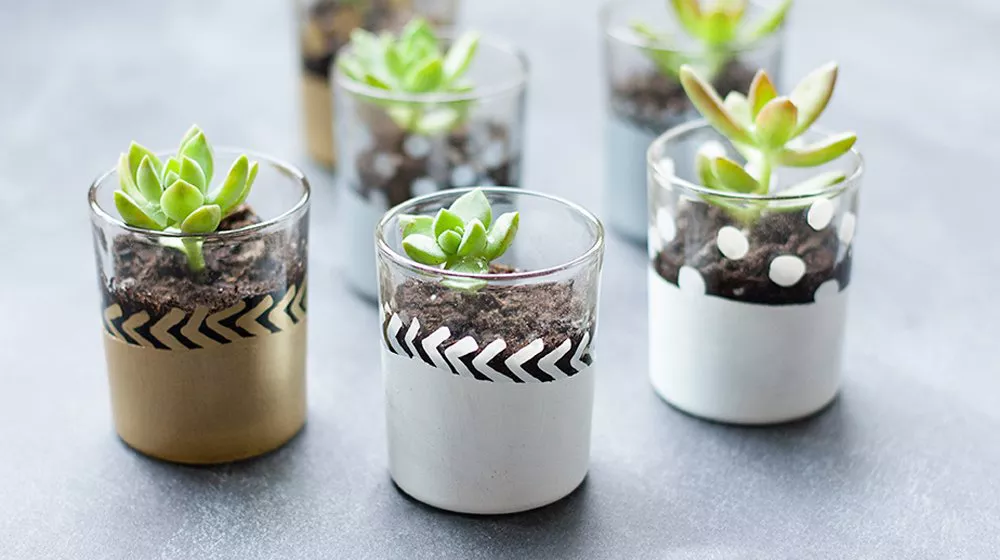Succulents, with their unique and captivating beauty, have become a favorite among plant enthusiasts. These resilient plants are known for their ability to store water in their leaves, stems, and roots, making them well-suited for various climates. While succulents are generally low-maintenance, providing them with the right amount of water is crucial to their health and longevity.
Understanding the Unique Needs of Succulents
Succulents, encompassing a vast array of species such as Echeveria, Aloe, and Sedum, have adapted to arid environments with infrequent rainfall. Their ability to store water allows them to withstand dry conditions, making them ideal for both indoor and outdoor settings. However, despite their hardy nature, overwatering remains a common issue that can lead to root rot and other complications. Properly soaking succulents involves finding the delicate balance between providing enough hydration without drowning the plants.
The Importance of Adequate Drainage
Before delving into the specifics of soaking succulents, it’s essential to highlight the role of proper drainage in their overall well-being. Succulents are particularly sensitive to standing water, as their roots can quickly rot when exposed to excessive moisture. To prevent this, ensure that the containers or soil mixtures used for succulents allow water to drain freely. Whether you are planting succulents in pots, containers, or directly in the ground, selecting well-draining soil and pots with drainage holes is crucial for successful succulent cultivation.
Choosing the Right Watering Method for Succulents
Succulents have different watering needs compared to other houseplants, and mastering the art of soaking succulents involves understanding the appropriate watering methods. Instead of frequent, shallow watering, succulents prefer infrequent but deep watering. This encourages the development of a robust root system as the plant seeks water deeper in the soil. When watering succulents, aim to saturate the soil thoroughly, allowing excess water to escape through drainage holes.
Balancing Act: How to Soak Succulents Correctly
Now that we’ve established the unique needs of succulents let’s delve into the step-by-step process of correctly soaking these resilient plants.
Assessing Soil Moisture
Before reaching for the watering can, it’s essential to assess the moisture level in the soil. Stick your finger into the soil up to the second knuckle. If the soil feels dry at this depth, it’s an indication that your succulent is ready for watering. If it still feels moist, hold off on watering until the soil dries out a bit more.
Choosing the Right Watering Time
Succulents typically thrive on a schedule of thorough watering followed by a period of allowing the soil to dry out. Water your succulents when the top inch of the soil feels dry to the touch. Morning watering is often recommended as it allows any excess moisture to evaporate during the day, preventing potential issues associated with damp conditions.
Watering Techniques
When it’s time to water your succulents, do so thoroughly. Ensure that the water reaches the root zone by watering until you see water escaping through the drainage holes. This deep watering encourages the development of a strong and healthy root system.
Avoiding Waterlogged Soil
Overwatering is a common mistake that succulent enthusiasts often make. To prevent waterlogged soil, it’s crucial to allow excess water to drain freely. If your pots lack drainage holes, consider repotting your succulents into containers that facilitate proper drainage.
Frequency of Watering
The frequency of watering depends on various factors, including the climate, humidity, and the specific succulent species. In general, allow the soil to dry out completely between watering sessions. It’s better to underwater than to overwater, as succulents are more forgiving of drought conditions.
Adjusting Watering During Seasons
Succulents may have different watering needs during different seasons. In the growing season, typically spring and summer, succulents may require more frequent watering. In contrast, during the dormant period in fall and winter, reduce the frequency of watering to accommodate the plant’s slowed growth.
Common Mistakes to Avoid When Soaking Succulents
While the process of soaking succulents may seem straightforward, there are common mistakes that enthusiasts should be mindful of to ensure the optimal health of their plants.
Overwatering
Overzealous watering is one of the most common pitfalls for succulent caregivers. Resist the urge to water too frequently, as this can lead to root rot and other issues. Always let the soil dry out before watering again.
Inadequate Drainage
Succulents despise standing water, and containers without drainage holes can be a recipe for disaster. Ensure that your pots or containers allow water to escape freely to prevent waterlogged soil.
Ignoring Environmental Factors
Factors such as temperature, humidity, and sunlight can impact the water requirements of succulents. Be attentive to changes in these environmental conditions and adjust your watering schedule accordingly.
Using the Wrong Soil Mix
Succulents thrive in well-draining soil. Using a standard potting mix that retains too much water can lead to root rot. Opt for a specialized succulent or cactus mix, or amend regular soil with perlite or sand to improve drainage.
Conclusion
Successfully soaking succulents involves more than just watering; it requires a thoughtful and strategic approach to meet the unique needs of these resilient plants. By understanding the importance of proper drainage, adopting appropriate watering techniques, and avoiding common mistakes, enthusiasts can cultivate thriving succulent gardens both indoors and outdoors. As you embark on your journey of succulent care, remember that each species may have specific requirements, so pay attention to the individual needs of your succulents for a flourishing and visually stunning display.


